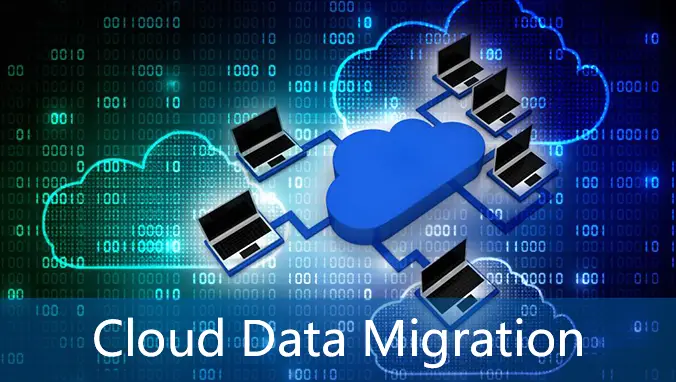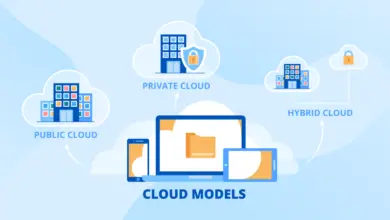Data Migration to the Cloud: A Strategic Leap Forward
Unlocking the Power of Cloud Data Migration: Strategies for Success

Data Migration: In the era of digital transformation, businesses are continually seeking ways to enhance their operations, streamline processes, and stay competitive in an ever-evolving landscape. One of the pivotal steps in this journey is the migration of data to the cloud. This transformational shift has become more than just a buzzword; it’s a strategic necessity. In this article, we, as seasoned SEO and copywriting professionals, will delve into the intricacies of data migration to the cloud and how it can propel your organization forward in the digital realm.

Understanding Data Migration
What is Data Migration?
Data migration refers to the process of moving data from one location or system to another. In the context of cloud computing, it involves transferring data from on-premises servers or legacy systems to cloud-based infrastructure and storage solutions. This migration can encompass various types of data, including customer information, financial records, operational data, and more.
Why is Data Migration Necessary?
Scalability:
Cloud platforms offer unparalleled scalability. As your business grows, the cloud can effortlessly accommodate increasing data volumes, ensuring seamless operations.
Cost Efficiency:
Migrating to the cloud eliminates the need for costly on-premises hardware and maintenance. Cloud services are typically pay-as-you-go, allowing you to optimize costs.
Enhanced Security:
Leading cloud providers invest heavily in security measures. Your data is often safer in the cloud than on local servers, provided proper security configurations are in place.
Business Continuity:
Cloud-based solutions ensure data redundancy and disaster recovery options, minimizing downtime in case of unexpected events.
The Cloud Migration Process
Assessment and Planning
Before embarking on a data migration journey, meticulous planning is imperative. This phase involves:
Identifying Data:
Determine what data needs to be migrated, categorizing it based on importance and relevance.
Choosing the Right Cloud Model:
Decide between public, private, or hybrid cloud deployments, aligning with your organization’s needs.
Evaluating Cloud Providers:
Select a reputable cloud service provider that suits your requirements, considering factors like security, compliance, and cost.
Data Preparation
Preparing data for migration involves cleansing, structuring, and organizing it to ensure seamless transfer. This process includes:
Data Cleansing:
Removing duplicates, outdated information, or irrelevant files.
Data Mapping:
Creating a clear map of data sources, destinations, and relationships.
Data Compression:
Reducing data size to optimize storage costs.
Migration Execution
Once the groundwork is laid, the actual migration takes place. This step is often the most critical and time-consuming. It includes:
Data Transfer:
The process of moving data from source to destination often involves multiple strategies like bulk loading or incremental transfers.
Testing:
Rigorous testing ensures data integrity and consistency post-migration.
Post-Migration Activities
After successful migration, several post-migration activities are essential:
Validation:
Ensure that data is accurately transferred and accessible in the cloud environment.
Optimization:
Fine-tune configurations and resource allocation to maximize performance.
Challenges and Considerations
While data migration to the cloud offers numerous advantages, it also comes with challenges that need careful consideration:
Data Security:
Ensuring data privacy and compliance with regulatory requirements is paramount.
Downtime:
Minimizing disruption during migration is crucial to maintaining business operations.
Compatibility:
Ensuring that legacy systems and applications are compatible with the cloud environment is essential.

Conclusion
In conclusion, data migration to the cloud is a strategic move that can propel your business into the digital future. It offers scalability, cost-efficiency, enhanced security, and business continuity. However, it’s crucial to approach this transformation with careful planning, thorough preparation, and diligent execution. The benefits are substantial, but so are the challenges.
FAQs:
What is data migration to the cloud?
Data migration to the cloud is the process of transferring data from on-premises servers or local systems to cloud-based infrastructure and storage solutions.
Why should businesses consider migrating their data to the cloud?
Businesses should consider cloud data migration for benefits such as scalability, cost-efficiency, enhanced security, and improved business continuity.
What types of data can be migrated to the cloud?
Virtually any type of data, including customer information, financial records, operational data, and more, can be migrated to the cloud.
What are the different cloud deployment models?
Cloud deployment models include public, private, and hybrid clouds. Public clouds are hosted by third-party providers, private clouds are for exclusive use by a single organization, and hybrid clouds combine both public and private elements.
How should a business choose the right cloud service provider?
The choice of a cloud service provider should be based on factors such as security, compliance, cost, and the specific needs of the organization.
What are the key steps involved in data migration planning?
Data migration planning involves assessment, data preparation, choosing the right cloud model, and evaluating cloud providers.
What is data cleansing in the context of data migration?
Data cleansing is the process of removing duplicates, outdated information, or irrelevant files from the data before migration.
Why is data mapping important during the data migration process?
Data mapping helps create a clear map of data sources, destinations, and relationships, ensuring data is correctly transferred.
What are some strategies for data transfer during migration?
Data transfer strategies can include bulk loading, incremental transfers, or even real-time data replication, depending on the specific requirements.
Why is testing crucial after data migration?
Testing is essential to ensure data integrity and consistency in the cloud environment, as well as to identify and address any issues that may arise during migration.
What are post-migration activities, and why are they necessary?
Post-migration activities include validation and optimization to ensure data accuracy and to fine-tune configurations for optimal performance in the cloud.
What are some challenges associated with data migration to the cloud?
Challenges can include data security, minimizing downtime, and ensuring compatibility with legacy systems and applications.
How can businesses ensure data privacy and compliance during migration?
Businesses should implement encryption, and access controls, and comply with relevant regulations to ensure data privacy and compliance.
What are the potential risks of data migration to the cloud?
Risks can include data loss, security breaches, and disruption to business operations if not executed carefully.
What are some best practices for a successful data migration to the cloud?
Best practices include thorough planning, regular backups, testing, involving stakeholders, and having a rollback plan in case of issues.
Where can I find more information on boosting website traffic through SEO?
You can find more information on boosting website traffic through SEO by visiting The Insider’s Views.




